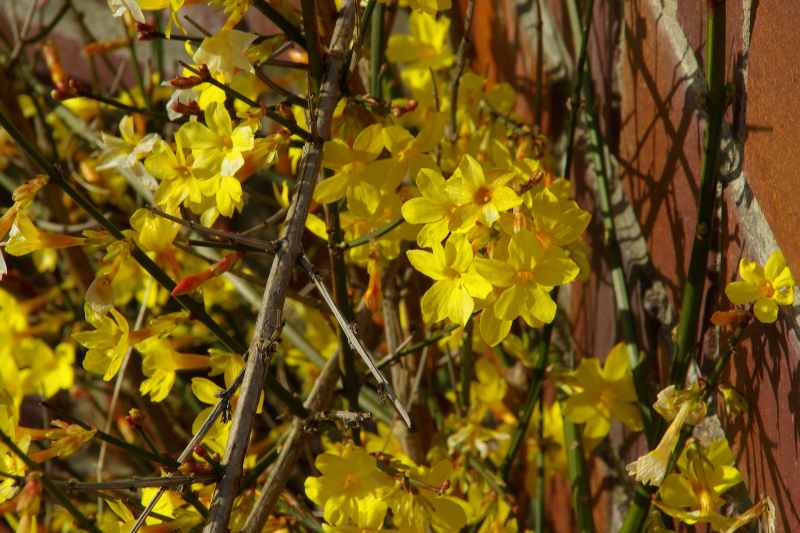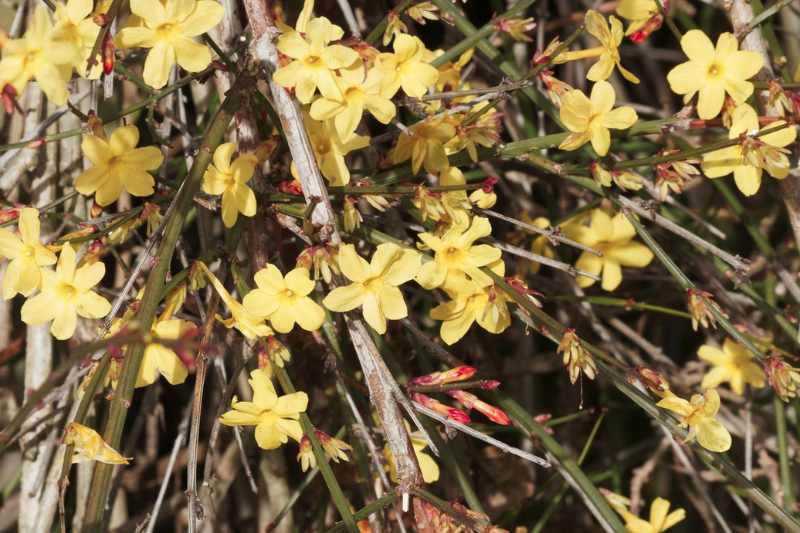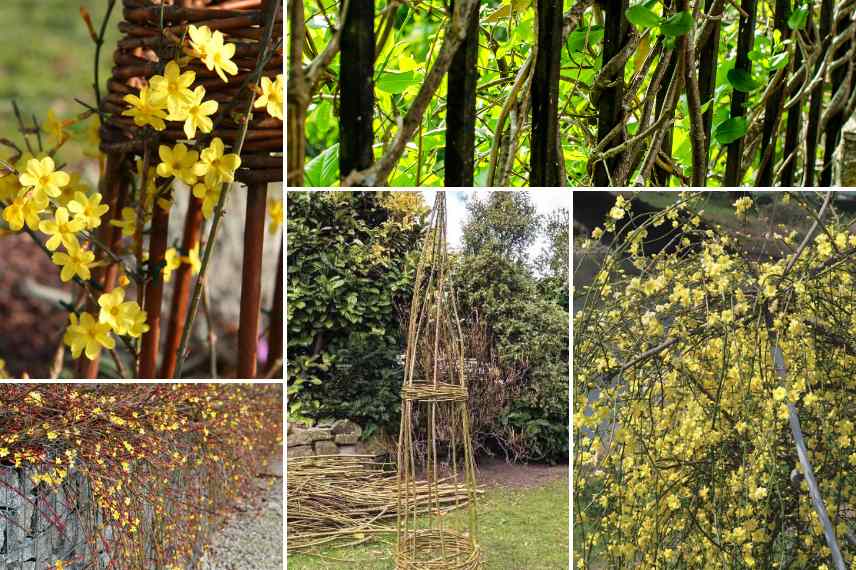We prize the winter jasmine (Jasminum nudiflorum) for its brilliant yellow flowering that lasts for many weeks in mid-winter, between November and April. Arching bush, it often sits against a low wall where it droops into arches and quite literally drips with small golden tubular flowers. They are unscented, unlike other jasmines, but so abundant that it would be a shame to miss out on this winter jasmine. Star of the cold months in the garden, it does not require much to thrive. We explain how to care for it to best support flowering and habit which can sometimes become unruly...

Pruning winter jasmine
It is useful to prune it lightly at the end of winter, after flowering, for several reasons :
- to favour generous flowering the following year
- to preserve a dense habit and control its shape
- to rejuvenate it and tidy up this bush which can become untidy, the woody climbing stems running in all directions on older specimens
- to remove dead wood within the branches, which become thick after a few years
- to reduce the spread of jasmines that have become too large
When and how to prune?
Carry out pruning at the very end of winter or in early spring, once flowering has finished. Timing varies by region, generally early April.
- Using a clean, sharp pruning shears, start by cutting back dry, frail stems and old shoots that often clutter the inside of the branches.
- Then carry out the flowering prune to encourage emergence of young vigorous shoots: on spent stems cut back to 20 cm from the base, once every 3 years, which will help maintain a compact habit. Cut above a large bud.
- On specimens that have become very large, obstructing a passage for example, consider a light thinning prune to limit the jasmine’s spread: cut back about a quarter of the stems at the base, especially on the sides of the bush if it overhangs a path.

Pruning winter jasmine produces very vigorous new shoots
Why training winter jasmine?
Winter jasmine has an arching silhouette when planted on top of a low wall, but it can also climb against a tree or a framework, or even trail, carpeting the ground. It will deploy its long junceous stems lacking any attachment system, reaching nearly 3 m in length (or in height!).
When you want it to climb or to fall in a cascade, it is therefore essential to train it onto a support, because it cannot twine or cling by itself. With training it will show off at its best; otherwise it will grow prostrate and lose aesthetic appeal, becoming shapeless.
How to train winter jasmine?
- For jasmine planted in the ground, training can be done on various supports: wire mesh or railing, arbour, fence, obelisk, but you can also lean it against a wall or low wall for a spectacular effect.
- For a planting in a pot, prefer a pretty wicker cone or make your own stake large enough to support the jasmine as it grows (using bamboo canes, willow branches, etc.)
- Attach the young plant at the base with soft, suitable ties or raffia, then as it grows secure the stems to help it climb.
- When the jasmine measures between 1.2 to 2 m in height (depending on the support), let it fall gracefully to form a cascade.

Help the jasmine climb on a support: wicker cone, railing, gabion low wall, homemade obelisk or... a makeshift bamboo stake!
Watering and fertilising
Winter jasmine proves drought-resistant once well established. Nevertheless, like any bush, it needs regular watering during the first two years to properly establish its root system, especially during very hot summers. Mulch around the base during the first years to help keep the soil cool and moist. As an undemanding bush, you can however add some compost around its base in spring.
If you have planted a Jasminum nudiflorum in a pot, it will need a little more attention: ensure the compost dries between waterings (water twice a week), and apply some feed at its base during the growing season (ideally a slow-release fertiliser such as horn meal, or a flowering plant fertiliser rich in phosphorus). Repot every 3 years.
N.B.: Completely hardy, Jasminum nudiflorum does not need winter protection in France. Nevertheless, in the first years it is preferable to mulch well, or even protect it with a winter fleece in regions subject to severe frosts.































![[plant_care id="jasmin-d-hiver" title="Jasmin d'hiver" display="both"] Jasminum nudiflorum Care](https://en.promessedefleurs.eu/blogwp/wp-content/uploads/2022/12/Comment-entretenir-le-jasmin-dhiver-.png)
Comments